The weigel plant got its name from the German professor of chemistry and botany Christian Ehrenfried Weigel, who made a huge contribution to the science of seed and fern plants.
In ornamental crop production, weigela shrub is used as a tapeworm or companion in group plantings, it is successfully used to create picturesque hedges and strengthen slopes.
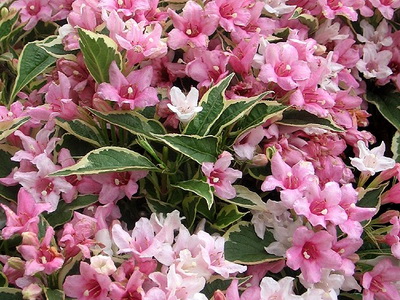
Weigela shrub: photo and description
Weigela (Weigela) belongs to the Honeysuckle family, the birthplace of the plant is Japan, China, Korea. It grows wild in the Far East. More than 15 species are known.

When describing weigela, it is necessarily mentioned that this beautiful shrub is highly valued in ornamental horticulture for its abundant and long flowering, the beauty of large flowers of various colors.
About 10 species of weigela are cultivated in ornamental gardening. More than 100 varieties are bred by the French gardener Lemoine. All these garden forms are combined under the general name of hybrid weigela.
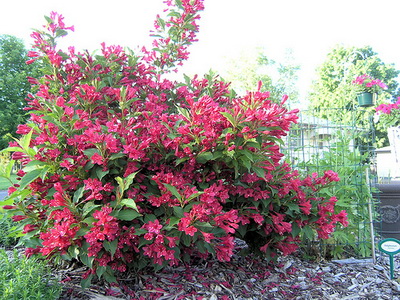
Early varieties bloom at the end of May, and late ones – in the first half of June. The color of the flowers changes, the flowers open from the buds lightly colored and gradually darken, so on the same bush you can observe flowers of various shades of pink and red.
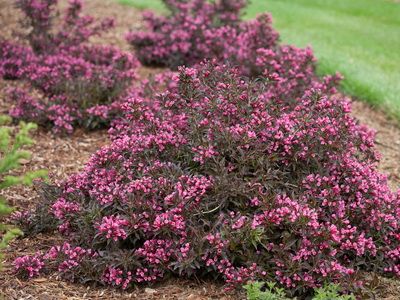
Beautifully flowering, in the conditions of Russia a rare shrub up to 2 m tall. The leaves are elliptical, serrate at the edges, opposite, without stipules, bright green.

As you can see in the photo, weigela flowers are large, up to 4-5 cm, yellowish-white, cream or yellow, often pink, usually odorless, most often solitary or collected in semi-umbrella inflorescences:

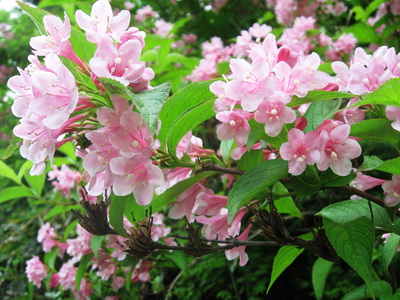

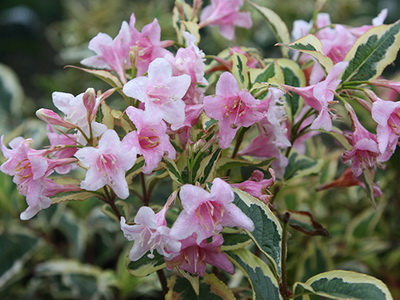
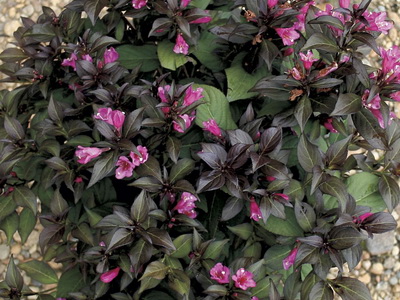
Weigela blooms in late May – early June for about three weeks. Sometimes, with a favorable summer at the end of August, repeated, but weaker flowering is observed on the tops of growth shoots. The fruit is a woody capsule.

The shrub is suitable for single and group plantings, looks good on lawns, in various compositions. Weigela can also be used for planting paths, alleys, as well as in uncut hedges.
Weigela winter hardiness and plant propagation
Weigela is not demanding on the soil, it easily tolerates transplantation, but only on fertile soil with abundant watering in the summer and an annual haircut will show itself in all its glory.
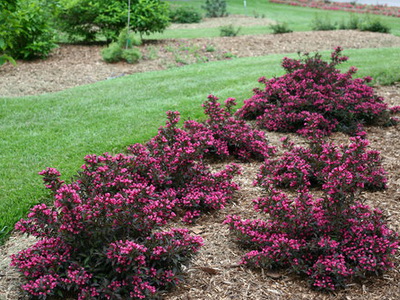
Likes a sunny spot, although it tolerates some shade. Very hygrophilous.
Weigela has an average winter hardiness. In cold winters, it freezes slightly, but it is easily restored and blooms in the same summer. In the first years of life, it should be bent to the ground in autumn for better wintering under the snow. Plant it where it sweeps large snowdrifts in winter, and there will be no problems. In the future, it winters quite well even without snow cover, but, of course, it freezes over in severe winters.
There are practically no pests in the plant; diseases also do not overcome it.
Weigela is propagated by root offspring, cuttings, both lignified in May and green in early July, and seeds that are either sown immediately after harvesting before winter in a school, or kept until spring in moist soil in a cellar or refrigerator. Weigela seeds ripen in mid-October.

It should be planted in single plantings so that there is enough space around for its beautifully curving, arched stems.
A prerequisite for growing weigela is soil mulching. Therefore, this work for good growth of shoots should be carried out annually in April – May.

Nuance: since flowering occurs on last year’s shoots, when they freeze, the flowering is inconspicuous, and therefore try to protect them in winter.
Look at the photo of planting and caring for weigela in the garden:
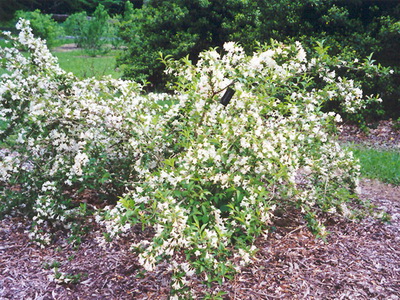

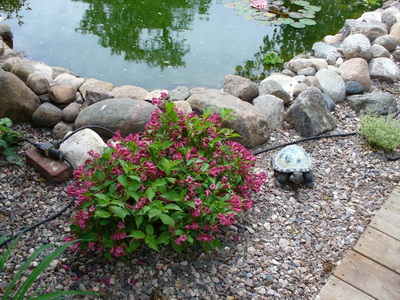
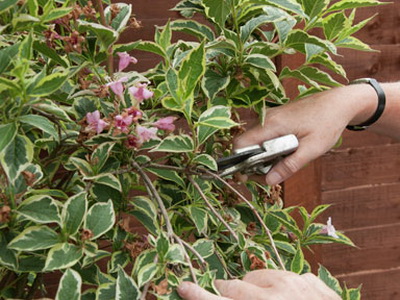

Weigela shrub pruning
Like most flowering shrubs, weigela needs regular pruning. The culture blooms on the shoots of the previous year, so after flowering, faded shoots must be removed. When pruning, first of all, old flowering shoots are removed, creating favorable conditions for the growth of new ones, on which buds are formed at this time, ensuring flowering next year.
Periodically, as it ages, the plant must be rejuvenated by cutting off old shoots to a stump. Practice has proven that weigela rejuvenation should be done in stages over two to three years. At the end of flowering, young strong shoots are formed at the base of the plants, which grow especially intensively after the removal of faded flowers and old shoots.
In autumn, usually in October – November, young shoots finish growing, they grow up to 1 m, they form a large number of small branches that bloom next spring.
The photo of weigela pruning shows how to properly form a shrub:

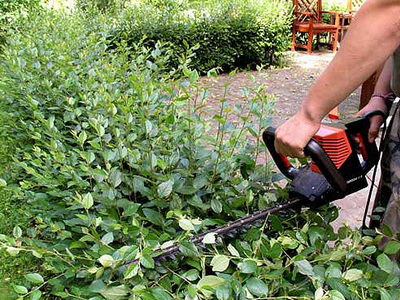
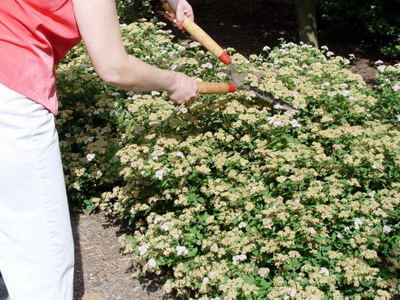
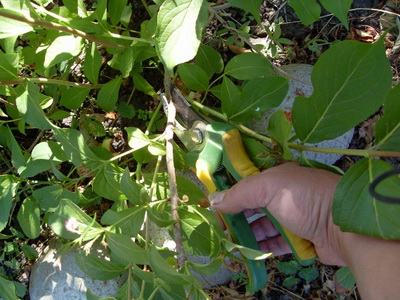
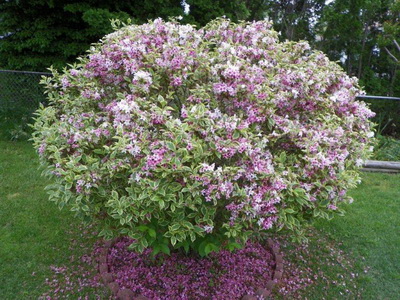
Description of the types of weigela
For amateur gardening, the most interesting are:
Weigela hybrid (W. hybrida) .
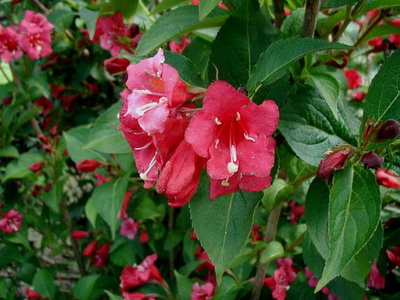
Weigel Middendorf (W. middendorfiana) .

Weigela early (W. rgaesox) .

Weigela. blooming (W. florida).

Weigela early – W. paresox , as the most winter-hardy and decorative of them. This is a densely leafy, sprawling shrub no more than two meters high.
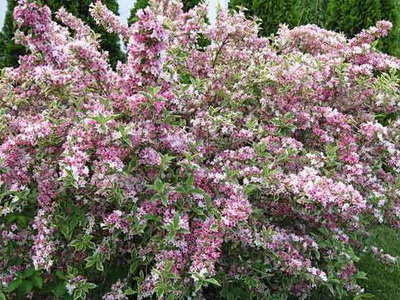
Weigela hybrid – Weigela hybrida . Under this name, garden forms obtained from crossing various types of weigela are combined. A huge number of varieties are known.

Weigela Korean – Weigela coraensis . Homeland – South and Central Japan. Shrub up to 5 m tall with very large, up to 12 cm, leaves.
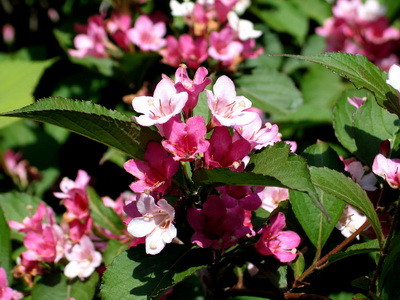
Look at the photo – the weigela shrub of this species at the beginning of flowering has pale pink, and then carmine flowers:
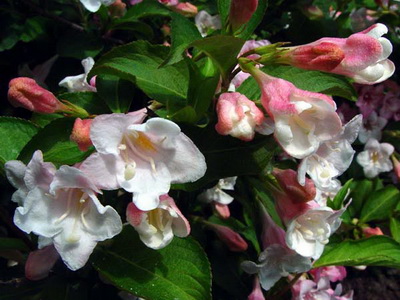



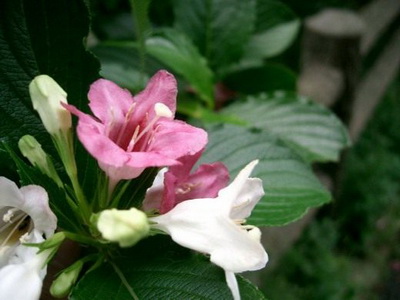
Blooms in early June. Abundant flowering lasts three weeks. There are also varieties with white flowers.
Weigela blooming – Weigela florida . Homeland – Far East, China. Shrub up to 3 m tall. Leaves elliptic, up to 10 cm long. The flowers are large, dark pink at the edges, pale pink or white inside, collected in small inflorescences located on lateral shoots. Blooms in mid-May. Flowering is plentiful, lasts about three weeks.








